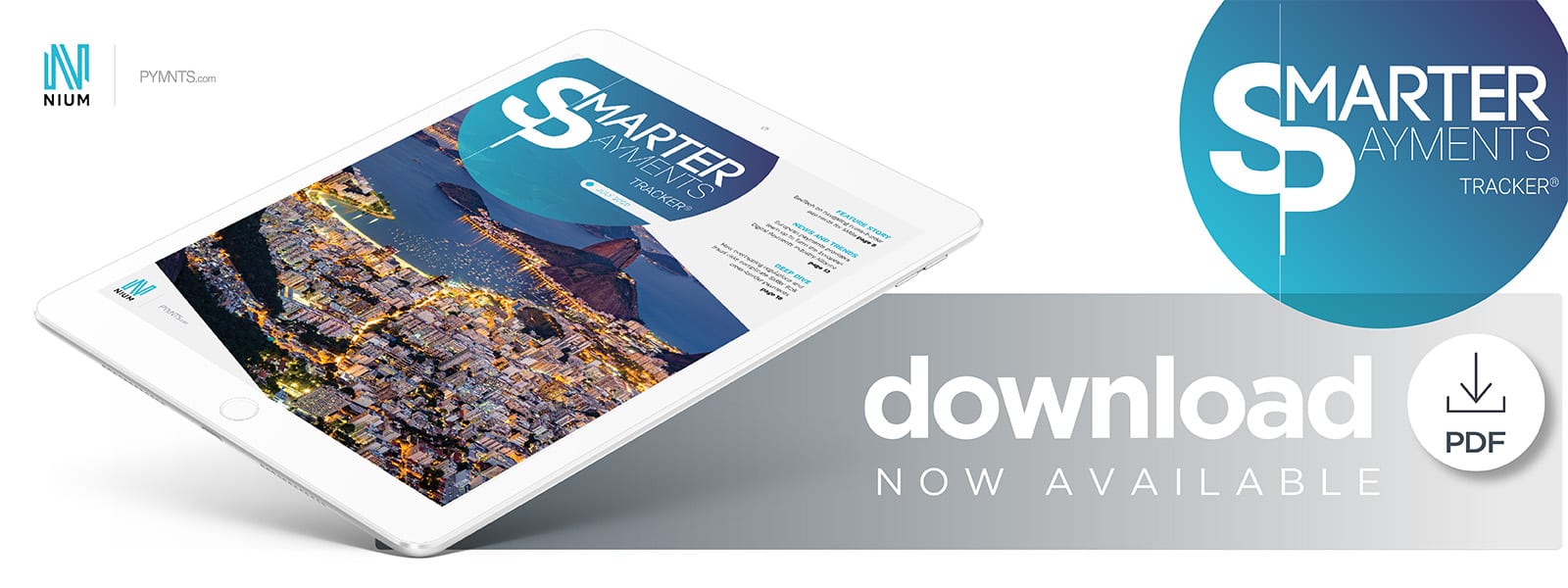How APIs And Improved Onboarding Can Accelerate Cross-Border SMB Payments

Lockdown measures across the globe have small- to medium-sized businesses (SMBs) looking to generate revenue overseas. But transacting with other merchants abroad is a process fraught with inefficiencies, ranging from slow processing times to lack of feedback if the payments fail. In this month’s Smarter Payments Tracker, PYMNTS spoke with Alexandre Liuzzi, co-founder of Brazilian FinTech BeeTech, about how APIs can help improve transparency and give SMBs the confidence for expanding their operations across borders.
Cross-border payments, once the exclusive domain of large businesses that had the resources to expand their operations overseas and afford the often-exorbitant costs of payment processing fees and international shipping, are growing ever more popular among small- to medium-sized businesses (SMBs).
The emergence of new digital payment methods, fortunately, has leveled the playing field between large and small businesses, making it easier than ever for SMBs to transact abroad and open up new revenue streams.
These payments still face more than their fair share of frictions, however. One survey found that 40 percent of SMBs are concerned with unfavorable exchange fees and another 29 percent find these payments intolerably sluggish. These friction points are too often the result of the outdated and inefficient cross-border payments infrastructure that most financial institutions (FIs) rely upon.
“Traditional banks have invested very little in how to improve the customer experience,” said Alexandre Liuzzi, co-founder and chief strategy officer at Brazilian financial technology provider BeeTech. “The whole process in the financial institution is still very unintegrated, and there’s a lot of different systems that don’t communicate within themselves and a lot of manual procedures that are not scalable.”
Faulty and outdated customer onboarding processes also share the blame for cross-border payment struggles, according to Liuzzi. Streamlining these procedures and implementing application programming interfaces (APIs) to connect banks more efficiently could be the lynchpin to ending these frustrations.
Problems With SMB Cross-Border Payments
The inefficiencies in B2B cross-border payments are well-known among struggling SMB owners, with the correspondence banking model having been in effect since 1973. The sender’s bank and the recipient’s bank rarely have the means to connect directly with each other, with the transaction instead going through a daisy chain of connecting banks.
“You had a lot of intermediaries,” said Liuzzi. “A Brazilian bank, for example, has to have another correspondent bank [in Brazil] that communicates with a correspondent bank in the U.S., which then communicates with the recipient’s American bank. So [a single transaction can] go through four banks, which is inefficient and can take up to 48 hours to liquidate.”
Equally at fault, if not more so, is the tedious and restrictive onboarding process that SMBs are required to go through before they can even think about making cross-border payments, said Liuzzi. This process scares many businesses away from conducting transactions across borders in the first place, restricting their revenue streams.
“The world has become more and more worried about the flow of money, not necessarily just because of terrorist financing but also because of anti-money laundering policies,” Liuzzi noted. “Banks have to understand the reasons behind the transactions and understand if this client can be approved to transact. It’s an inefficient process in terms of both the regulatory requirements and its outdated messaging system.”
Any one of the correspondence transactions or onboarding processes can completely fail with zero feedback to the sending or receiving SMB, leaving both businesses stupefied as to why the payment was declined. Improving transparency and speed can be achieved through digitization and APIs.
Improving Cross-Border Payments For SMBs
Digitization of onboarding procedures allows more seamless integration with other data sources, according to Liuzzi. This digitization permits payment providers to leverage government databases and even the data of other third-party processors to cross-reference applicants digitally, slashing the time it takes to ensure that they are who they say they are.
“We can do all the validation checks with the bureaus digitally for the onboard, and then enable the SMB to [make the payment] and also liquidate the transaction really quickly,” said Liuzzi.
Once the onboarding is complete, payments processors can link with the receiving banks via APIs rather than go through the labyrinth of linked correspondence banks. All the compliance and authentication checks are performed by the API rather than the banks themselves, diminishing the amount of redundant verifications that slow payments down and keeping the senders and receivers in the loop on their payment’s status.
“If you’re a customer in Brazil and want to invest abroad, for instance, you have to prove that you have an account open with a brokerage firm like TD Ameritrade or Charles Schwab and send the payment provider all of your documentation,” Liuzzi noted. “But now all you need is an account number and the name of your brokerage firm, and the [payment provider] just pings them through the API.”
Providing the customer with updates at every step of the payments process is only a stopgap measure, however. The ultimate goal is making these payments completely instantaneous and make these updates unnecessary in the first place. Either the payment succeeds or fails instantly, and in the latter case, the customer can solve the problem and just try again right away.
“Feedback is needed because the transaction takes time,” said Liuzzi. “If you are actually instant in the transaction, then the only feedback you need is just ‘Hey, it’s there.’ So, what we are working on now is how to provider better feedback, but the ultimate goal is to create instant transactions.”
Many countries, including Brazil, are working on developing the infrastructure to make this dream of instant payments a reality. Digitizing cross-border payments in the meantime can help SMB customers keep apprised of their payment status and ensure that the flow of their international payments remains fast, seamless and well-informed.

